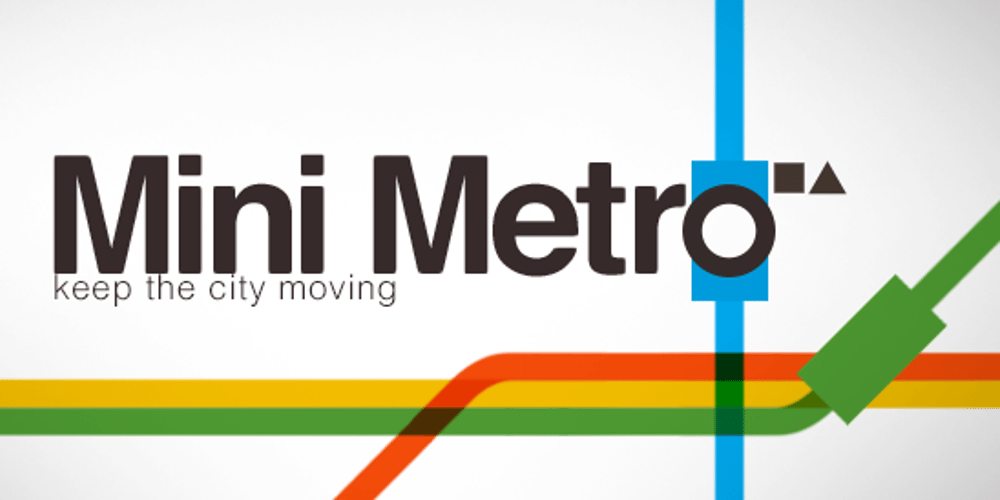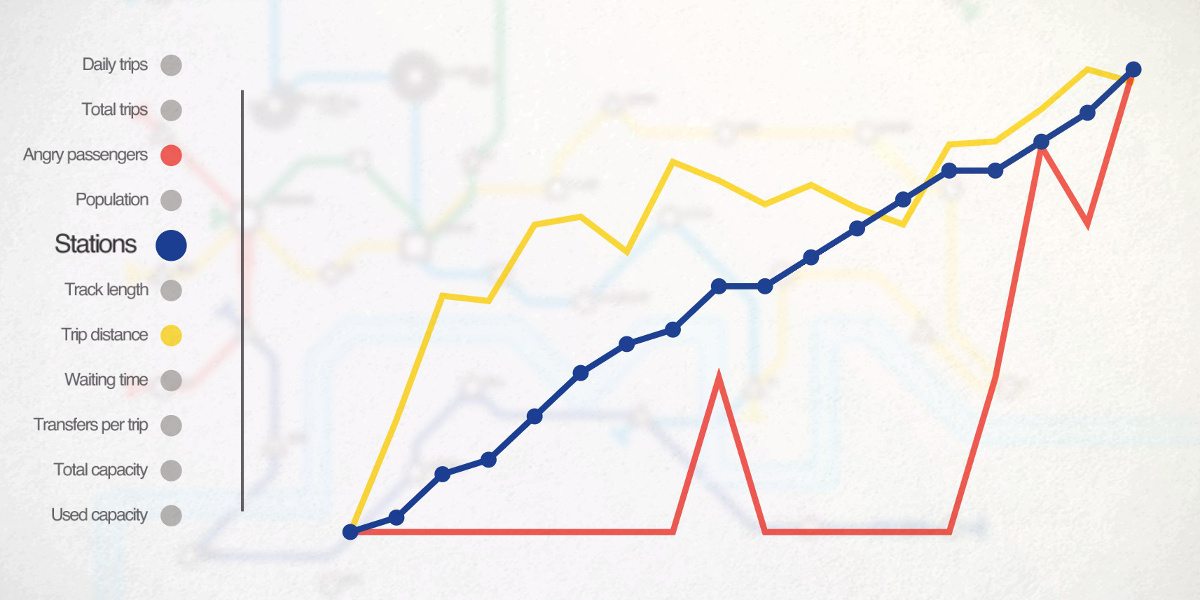
There’s something special about transportation games, especially if they involve trains. Going as far back for me as The Railroad Works, I’ve been hooked by various titles over the years including the board game Empire Builder and the cleverly disguised time vampire that is the Railroad Tycoon series. Route creation is an experience that quickly puts me into flow, combining engineering, intuition, aesthetics, and a compulsion for optimization that blocks off my awareness of the rest of the world.
So when game dev Tanya X Short tweeted about her nephew finding Mini Metro captivating to watch I decided to check it out. I bought it before even getting halfway through the first “Let’s Play” I found on YouTube.

Mini Metro is a game about moving people on a transportation network based on real-world locations. When the waiting time at any one station becomes too long, it fills to capacity and the game ends. The map is drawn in a minimalist abstract style pioneered by Harry Beck. Stations are represented by a variety of symbols, with some (circles, squares, triangles) being more common than others (cross, star, pie wedge). Passengers appear at stations and are represented by the symbol of their destination station.

Creating your network is as simple as dragging between two points. Routes can be extended easily, or have stations inserted by clicking and dragging on the line, bringing it like a rubber band to the new station. Once created, an engine will start moving between all the points on the route, picking up and dropping off passengers as it goes. The game tracks time in days of operation, and upgrades are made available at the end of each week including tunnels, extra engines and routes, carriages (to create double or triple-length trains), and upgrades for your stations to make loading/offloading faster.
You’ll need those upgrades: as you play more stations are added, and you’ll often be stymied by a grouping of three or more similar station symbols on the outskirts of your map. Adding them without overwhelming your lines is a constant challenge. Despite being able to redraw the entire system at any time, even while paused, your network will eventually succumb to the pressure. Unacceptable performance is shown by a growing dark circle at your affected stations, with long-waiting passenger symbols shaking impatiently. Your success is measured by how many people you managed to deliver, and after the game you can see how you stack up compared to all players worldwide.

There is no soundtrack for Mini Metro in the traditional sense, but the game has a mesmerizing musicality brought to life by Disasterpeace. Routes have their own “tracks” (ha ha) that change based on their length and what the engines are doing. Passengers make satisfying pops as they are brought into existence and give pleasing dings when picked up. Trains make gentle susurrations as they arrive at stations, while impatient passengers coo like angry Tribbles. It all adds up to envelop you in a warm cocoon of sound as you happily tinker with your creation.
I find many puzzle games have a short life, but that won’t be a problem here. I counted 13 maps in Mini Metro, though you’ll have to unlock some by reaching sufficient scores on earlier levels. Moreover, each map is randomized for when and where stations appear, so each attempt will be unique. Add to that both extreme (no route deletion) and endless game modes, as well as a daily challenge, and there’s enough content here to keep your inner city planner busy for hours.

Mini Metro brings a wonderfully tight focus to its gameplay while ensuring that its core elements are perfectly implemented. Despite this minimalist approach, some very welcome features are provided including night and color-blind modes, leaderboards, and graphs giving you insight into your transportation network from a number different metrics. The game also has a built-in screenshot tool (which saves shots in your Steam library) and animated gif creator for Normal mode so you can share your creation easily.

Mini Metro is fun, gorgeous, and entrancing. At just $10 on Steam (and 10% off until the end of the 2015 Holiday Sale), it’s a game every puzzle lover, min-maxer, amateur city planner, and train enthusiast should have in their collection.



